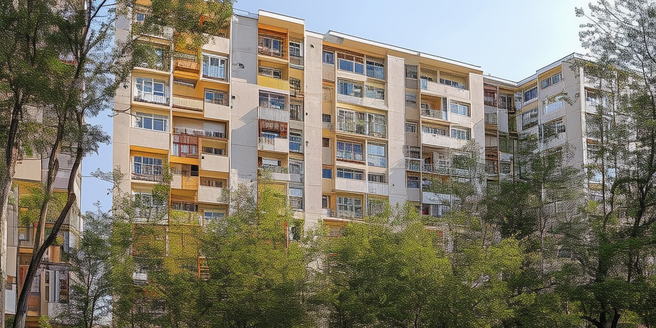Understanding Section 8 Housing
The Housing Choice Voucher Program, or Section 8 housing, is a key federal program that provides rental assistance to low-income families, forming a significant part of the biggest social welfare initiative in the US aimed at improving life quality for vulnerable residents. The program’s main goal is to bridge the financial gap between these families and the high costs of private rental housing, ensuring they don’t fall behind due to their socioeconomic status and can afford dignified housing. Through Section 8 housing, financial security is offered to participants and helps to break the cycle of poverty by providing stable shelters and opportunities for an improved life. By giving rental aid, Section 8 housing doesn’t only support these families in the private rental sector but also contributes to a major societal objective: improving living conditions for those in economic hardship, fostering a society where everyone can live comfortably and safely.
Eligibility Criteria for Section 8 Housing
Section 8 Housing is a crucial resource for financially vulnerable individuals and families, with eligibility primarily based on a household’s total earnings and designed to support households earning less than 50% of the area’s average income. Other qualifications include applicant’s citizenship status, e.g., U.S. citizens or eligible non-citizens, family composition such as whether one is a single parent, has children, or includes seniors. Additionally, a critical factor is the applicant’s eviction history, especially drug-related evictions, as the program aims to ensure a safe environment for beneficiaries. In essence, Section 8 Housing eligibility is a comprehensive process, considering various factors but always with a central focus on assisting those most in financial need.
Income Limits for Section 8 Applicants
Income limitations are categorized into three sections reflecting different income levels in relation to the median wage: the low income cut-off (80% of median income), the very low income cut-off (50% of median income), and the extreme low income category (30% of the median or the poverty line, whichever figure is greater). Each category signifies a specific segment of the population, enabling an approximately scaled comparison of household income levels. These thresholds serve a critical purpose in financial procedures, especially in determining eligibility for various aid programs. The applicant’s income is compared to these thresholds to identify their income bracket and determine the assistance they’re entitled to. This income limit segmentation is vital for resource allocation and for maintaining a fair system of support provision.
Important Documentation for Section 8 Housing Application
When applying for Section 8 Housing, applicants must fulfill certain requirements including providing necessary documents related to their personal and financial status. As proof of income, they need to provide pay stubs, tax returns, or written employer statements, which are crucial in assessing eligibility. Further, identifiers like passports, birth certificates, or Social Security cards must be provided for all household members to confirm legitimacy. Applicants also need to present proof of legal residency, such as passport, green card, or visa, to affirm their right to live in the United States. Lastly, outlining assets like property, cars, and investments deepens the understanding of the applicant’s financial situation. All these documents must be accurate and timely to help expedite the application process, leading to quicker results.
How To Apply for Section 8 Housing
Individuals or families considering applying for housing assistance should initially examine their qualifications thoroughly to ensure they meet the necessary criteria. Checking eligibility can be done before commencing the process of lodging an application with the local Public Housing Agency (PHA). This agency, responsible for providing housing aid to the eligible, will subsequently verify the information provided in the application.
Verification by the PHA is an integral part of the application process as it ensures that only those who qualify for the help receive it. Approval is given after a detailed verification process. However, this process isn’t typically speedy due to the high demand for affordable housing assistance. The supply of housing vouchers often falls short compared to the demand, contributing to the length of the application approval process. Thus, applicants must demonstrate patience while their applications are under review, considering the high demand and limited supply.
Common Mistakes to Avoid in the Section 8 Application Process
Applying for Section 8 housing can be a complex process, and applicants often make mistakes that can slow down the procedure or even cause disapproval. The most common errors involve not providing comprehensive or accurate information during the application process, failing to notify the Public Housing Agency (PHA) about major changes that affect eligibility, and not responding promptly to correspondence from the PHA. These oversight can lead to the slowing down of the process, or denial of your application. It’s pivotal to avoid these mistakes to ensure a smooth, unimpeded process by keeping the lines of communication with the PHA open, precise and current.



